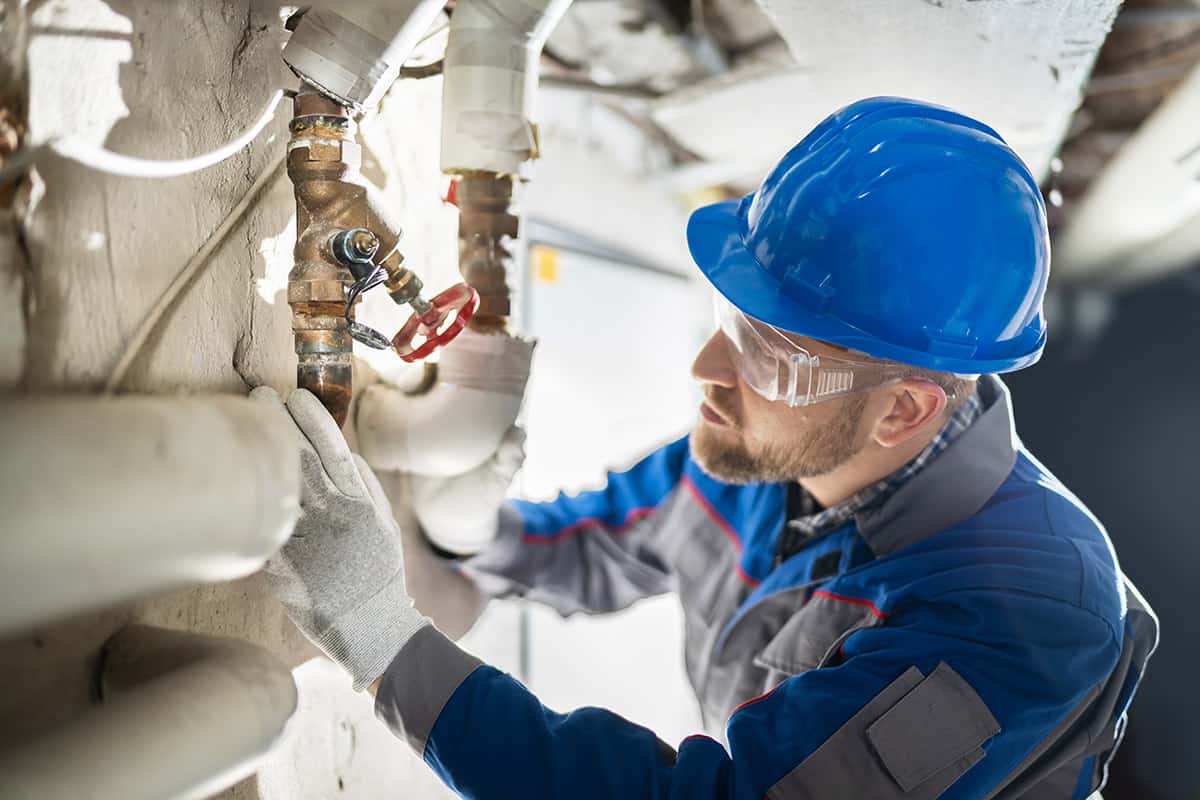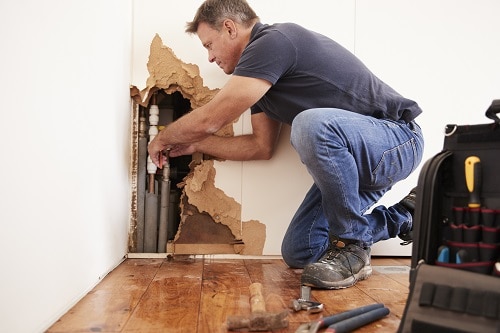Leading Tips for Effective Water Damage Restoration: Protect Your Property Today
Water damage can strike all of a sudden, triggering considerable disruption and possible dangers. Efficient restoration needs a systematic method to minimize additional injury. From evaluating the damage to executing safety nets, each action plays a crucial role in protecting residential property. Understanding these methods can make all the distinction in the consequences of a water-related dilemma. What necessary actions should be focused on to ensure thorough security?
Evaluate the Damage Quickly
When a water damage event occurs, it is necessary to examine the damage right away to minimize further problems. This initial examination aids identify the degree of the damage and recognizes impacted locations. Water can seep into walls, floorings, and furnishings, leading to mold and mildew development and architectural instability if not resolved without delay. A thorough examination needs to include examining for discoloration, moisture, and moldy odors, which indicate dampness visibility. It is additionally crucial to record the damage through pictures and notes for insurance purposes. Engaging professionals for a more comprehensive evaluation may be essential, especially when handling surprise or extensive damage. Water Damage Restoration. Early acknowledgment and exact analysis lay the foundation for efficient restoration and guard the residential property from extra problems
Shut Off the Water Supply
Shutting off the water system is a vital action in stopping more damage throughout a water-related event. When a leakage or flood happens, immediate activity is important to minimize the degree of the damage. Locating the major water shut-off shutoff should be a concern. This shutoff is commonly located near the water meter or where the water line goes into the building. As soon as situated, turning the shutoff clockwise will certainly stop the flow of water. In situations where the main shutoff is inaccessible, specific shut-off shutoffs for devices might likewise be utilized. Quickly shutting down the water supply not only secures the home from extra damage but also facilitates the succeeding restoration process, making certain that healing efforts can begin without hold-up.
Remove Excess Water Immediately

Removing excess water immediately is vital for minimizing damage and preventing mold and mildew development in influenced locations. The longer water continues to be touching products such as drywall, timber, and insulation, the better the danger of structural damage and the development of mold. Mold Remediation After Water Damage. House owners ought to act quickly to examine the scenario and make use of appropriate tools, such as damp vacuums or pumps, to remove standing water effectively. If the quantity of water is significant, speaking to expert restoration solutions might be required, as they can offer specific equipment and expertise. Additionally, removing furniture and items from the afflicted area can help to reduce damage and facilitate the general restoration process. Prompt activity not only protects residential property however likewise help in a smoother healing trip
Dry Out the Affected Location
After removing excess water, it is necessary to dry out the affected location thoroughly. This entails eliminating any kind of standing water and improving air flow to help with evaporation. Efficient drying out will aid stop mold growth and additional damage.

Get Rid Of Standing Water
Swiftly attending to standing water is vital for reliable water damage restoration. The existence of stagnant water can bring about further property damage and produce a setting favorable to mold and mildew growth. To mitigate these threats, it is important to get rid of standing water as promptly as possible. This process generally involves using submersible pumps, wet vacuums, or specialized extraction tools. Professionals advise examining the depth and extent of the water before selecting the appropriate technique for elimination. Safety safety measures must likewise be taken, including using protective equipment and ensuring electricity is switched off in influenced locations. As soon as the standing water is successfully removed, the drying out procedure can begin, even more guarding the residential property from recurring damage.
Rise Air Flow
Increasing air circulation is vital for properly drying locations impacted by water damage. This procedure helps to quicken evaporation, reducing the danger of mold and mildew and mold growth. Professionals usually recommend using followers to create a consistent airflow throughout the room. Putting box fans in windows can reel in fresh air, while high-velocity followers can read more guide air flow towards moist surface areas. Flood Cleanup Services. Furthermore, opening up windows and doors enables cross-ventilation, boosting the drying out process. Dehumidifiers can also be used to remove excess dampness from the air, additional assisting in drying out. By making certain that air flows openly, residential property proprietors can significantly minimize the lasting impacts of water damage and protect the integrity of their structure
Check for Mold Growth
Mold and mildew development is a severe worry adhering to water damage, as it can result in wellness problems and architectural degeneration. After any type of flooding or leaks, it is vital to carry out a detailed evaluation of the impacted locations. This includes checking hidden rooms such as behind walls, under carpetings, and in cellars or attics where dampness might stick around. Indications of mold and mildew consist of a stuffy odor, staining on surface areas, or visible development. Building proprietors must make use of safety gear when evaluating, as mold spores can position health risks. If mold is found, it is essential to address it immediately, as delaying removal can exacerbate the problem and increase the risk of severe wellness worries for residents. Early intervention is essential to reliable mold and mildew monitoring.

Repair Work and Recover Broken Structures
When attending to water damage, it is essential to very first analyze the structural honesty of the influenced locations. This assessment assists identify potential dangers and educates the necessary repair strategies. Engaging expert restoration services guarantees that the restoration process is performed safely and effectively.
Analyze Structural Integrity First
Before launching any type of water damage restoration, it is essential to evaluate the architectural integrity of the affected area. This evaluation helps determine any compromised elements, such as structures, light beams, or walls, which might posture security threats - Water Damage Restoration. Examining for indications of warping, breaking, or mold and mildew growth is critical, as these indicators can expose underlying damage that needs instant focus. Furthermore, recognizing the extent of the damage can lead restoration efforts and establish whether fixings are viable or if replacement is required. It is necessary to document findings extensively, as this info can be useful for insurance coverage claims or future referral. Focusing on architectural analysis warranties that restoration efforts continue safely and efficiently, inevitably shielding the residential property and its occupants
Usage Specialist Restoration Services
Using specialist restoration services is important for effectively repairing and restoring broken structures after water occurrences. These specialists have the required training, tools, and experience to assess and mitigate water damage thoroughly. They can determine surprise concerns, such as mold and mildew development and structural weaknesses, that may not be quickly obvious. Specialist solutions also employ advanced drying strategies and tools, guaranteeing that all moisture is gotten rid of to stop additional damage. Additionally, they comply with sector standards and regulations, ensuring that the restoration process is effective and risk-free. By engaging restoration professionals, homeowner can expedite healing, reduce long-term damage, and ultimately shield their financial investment. This positive approach is important in preserving the stability and safety of damaged structures.
Protect Against Future Water Damage
To efficiently stop future water damage, house owners have to take on a proactive strategy to upkeep and fixings. Regular examination of rain gutters, roofings, and downspouts is crucial; clogged up seamless gutters can cause water overflow and roof leakages. Additionally, examining for leakages in pipes components and devices can ward off prospective damage. House owners need to additionally take into consideration setting up sump pumps in cellars or low-lying locations to take care of water accumulation. Sealing fractures in structures and making certain correct drainage around the residential or commercial property are vital actions in guarding versus water intrusion. Furthermore, maintaining moisture degrees with dehumidifiers can protect against mold development. By applying these safety nets, house owners can considerably minimize the threat of water damage and shield their home for the long-term.
When a water damage event happens, it is necessary to assess the damage promptly to minimize further problems (Emergency Water Removal). Removing excess water quickly is important for decreasing damage and stopping mold and mildew development in affected locations. Quickly dealing with standing water is crucial for effective water damage restoration. The presence of stagnant water can lead to more residential or commercial property damage and create an atmosphere favorable to mold and mildew growth. Prior to starting any water damage restoration, it is essential to examine the architectural honesty of the affected area